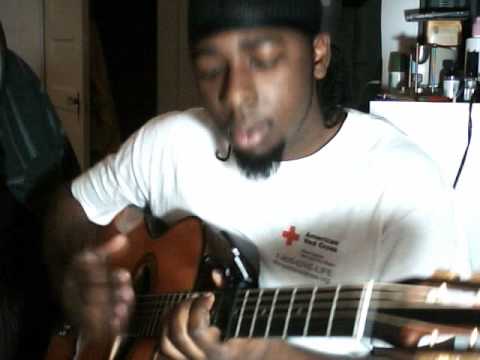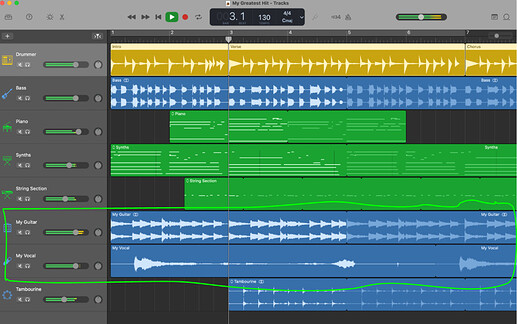Lol this seems to get linked about once a week in my social networks so I’ve seen it several times.
I needed to put some (hard) metal drums together for a track and was watching the Toobz to see what these guys are doing in theory. I’m not into thrash or whatever as a genre but those guys can absolutely shred. Especially the double pedal stuff at insane BPMs blows my mind. Was watching this guy doing a lesson and when he finished the intro he was breathing like I do after taking a lap on the track.
So far, the weirdest IRs I downloaded are actually instruments. Since my electric guitar has a piezo I thought maybe I could fake some of these. Here’s an impulse from a National-style tricone resonator guitar. Not much on this other than some EQ and reverb. Had to cook up a swing loop b/c I can’t play jazz or blues over a straight click.
We need an NBA TopShots for guitar moments. Really we don’t but we sorta do.
Had wanted to watch some NBA, but can’t stop listening to that song. I have issues
We all need new Frontiers.
The Beato primers on EQ and compression are very good. Dude is skilled at presenting ideas and information clearly and effectively. That’s probably why he has over 2M subscribers lol. I’ve noticed he can hold my attention where most others can’t, and I think it’s because he cleans all the fat off the bone and presents lean content while mixing in interesting anecdotes. It’s pretty refreshing since so much of Youtube is unqualified slow talkers giving “tutorials” that are more painful than just figuring it out yourself.
I enjoy his What Makes This Song Great series. Some really interesting tidbits and I also enjoy him isolating tracks.
Probably the funniest thing is that I watched 4-5 “drummers or drum teachers” do this video and they had no idea what the fuck was going on. The dude I linked before that analyzed Scarlet-Fire also used to play drums I guess and his video watching it with his newborn was better than the others I watched.
For crazy drums I like Vinnie Colaiuta a lot.
He’s great. Porcaro also. They weren’t rocking the fuck out like that in 33/8 though. Carey is a machine.
I’ve been thinking about this a lot and developed a test for us: Can you “hear” tab? Because I sure as hell can’t despite, at least at one point, being decent at “sight reading” it with notated rhythms. For example, can you identify this by hearing it in your head (as opposed to familiarity from previously playing it)?
I definitely cannot, even though I can name the notes and intervals at sight. And since I’ve been doing this for a long time, it leads me to believe that there’s an innate ability required that I do not possess, like some type of processing thing.
However, this is strange to me. Was she able to, say, create an entire score from scratch in her head and then transfer that to paper or instrument? I find the creation part to be really easy and just have to work a little to lay down a recording or notation. It’s not uncommon for me to have most of the parts worked out in my head before I start transferring them. However, I only have a vague idea at most of what they’ll look like scored or played until I start sounding them out on piano or guitar.
Your guy popped in my rec list with something I’m more familiar with. He correctly identifies the insanity in Tommy’s playing–chord subs and voice leading–that I think gets overlooked by people who can’t see past his technique. He absolutely nails it so I’ll be subscribing.
Compare that to this which is not nearly as interesting to my ear in harmony or voice leading (in fairness, Tommy didn’t write Classical Gas but his arrangements are mostly in that same style):
My theory is that technique is the first thing most people notice, so they get captured by it and kind of forget about the fundamentals of good music. I’m not picking on this guy–he’s a great player–but these two-handed tapping fingerstylists have overpopulated the matrix and sound really similar. There’s a lot of straight time, diatonic harmony, and disconnected melodic ideas. I think it only works as ambient, which is fine but I doubt that’s the intention. Here is their inspiration but this composition is beautifully connected and the technique is just secondary:
Does anybody have recommendations for the simplest set up for recording basically a rap mixtape. I’ve been writing songs and playing guitar for a while now and I write a lot of songs to rap music and then try to transfer them to guitar but lately I’ve just been singing through my microphone through my amp while I play the instrumental version of the song on my iPad to my tiny Amazon echo speaker and I record it on GarageBand on my iPhone all at once . It sounds good enough for me but if I put it out as like a real mixtape I think I should make it better quality probably. But the problem is Im autistic and I get completely overwhelmed by the wires and figuring everything out like plugging things in and then I just get overwhelmed and I can’t do the music part it it’s hard to explain but I’m just looking for recommendations on the simplest set up that would make it sound good enough that people would actually listen to it. Or is doing it how I’m doing it good enough do you think? Like if I play it back in my car while I’m driving it sounds good to me but I don’t listen to music on my headphones so it might be different that way I guess . I’m not looking for it to be like produced properly or anything just good enough to release publicly and not get laughed at lol. Anythoughts would be appeciated thanks!
I was about to say “hi dyke thanks for bumping the thread” but that sounds off.
Hi dd, thanks for bumping the thread lol, 1 sec.
Well, one of the aesthetic qualities of a mixtape is that the artist has ultimate creative control. Like, by definition that’s what makes a ‘mixtape’ a mixtape, as opposed to some sort of actual EP or album release. So, the listener should be going in with that frame of mind, that they’re going to be listening to something potentially very raw and lo-fi (and those qualities aren’t inherently ‘bad’ or anything, I should stress) depending on the recording and mixing experience of the artist.
This also doesn’t mean you have to do it all on your own, like, I could totally help you here and it would still count as a pure mixtape. Definitionally the difference is a mixtape doesn’t have the creative input of a label and team shaping and fine-tuning everything.
I think a similar example, in terms of the listener’s duty, would be a bootleg concert recording. It’d be silly for the listener to say ‘this sounds off and weird and not professional’ because it’s right there in the name, it’s a bootleg concert recording, somebody in the crowd just recording it.
Maybe a better example would be this video below. It’s arguably the greatest cover ever made and just looking at the screencap the listener knows right away it’s just a guy sitting in front of his laptop performing and not a professional recording. So, the listener should know they’re about to potentially hear some lo-fi magic (and they do, hoo boy)
So uh, that’s my long answer to say ‘yeah, it’s all good’ lol.
Yeah, it can be super overwhelming but the good thing is that when using a DAW (digital audio workstation, like Garageband) you quickly pass a threshold when it goes from ‘what the hell am I looking at’ to ‘oh ok, this is actually pretty straightforward and simple’.
That said, I think you have everything you need already, mainly a microphone and a copy of Garageband. No need for more wires and plugging things in and what not, and I think my suggestion might make things simpler and give you more control over quality: Instead of playing the backing instrumental on the ipad and recording the whole thing as one ‘live’ take, put the backing track in Garageband and record the vocals as a separate track, and then render it as an audio file. If that doesn’t make sense just let me know which part I’m not explaining well.
It should just look like (I pulled the image from macOS app user guides: GarageBand for MacUser Guide - Apple Support (CA)) this, but with only two tracks:
This way, even if you don’t have any interest in digging in too deep, you can adjust the volume and do minor EQ tweaks. A huge chunk of it is just making sure one track isn’t louder than the other and doesn’t have too much treble or bass.
Don’t hesitate to ask any follow-up questions. I alluded to it earlier in this thread but one of my great joys in life is helping people find and express their creativity in this manner.
Thank you so much that’s like lots of good information and I’ll definitely be asking you more questions thank you! I didn’t realize I could put the instrumental into GarageBand so that will make things better right away I think. And yeah the other stuff in garage band I haven’t really delved too deeply yet but I need to. You wrote it out really nice so I can follow it easy thank you!
X-posting to get this thread cooking again.
Yeah, I feel bad now because I think you think I was calling you a noob lol. Nothing you’ve said has made me think that, for whatever reason I just assumed that since you were diving into DAWs you were also diving into mixing. I think it’s because I’ve worked with electric guitar players who’ve wanted to get into mixing in DAWs; like, you guys are so used to twiddling with your pedals and amp knobs it’s a seamless transition into mixing.
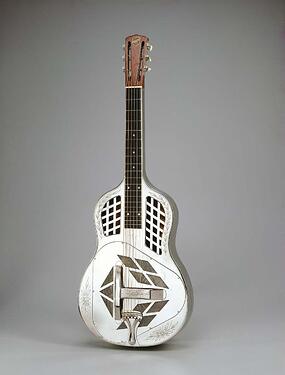

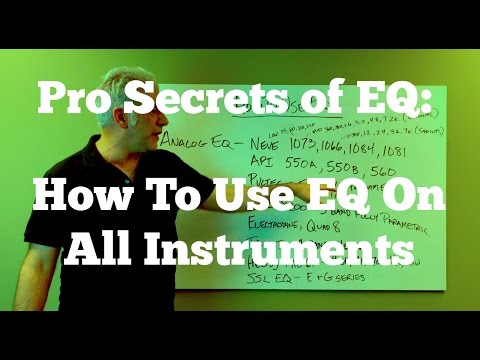
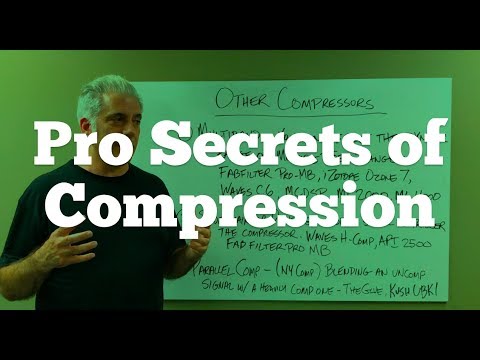
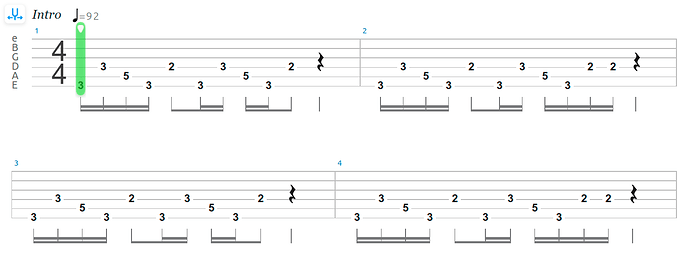
![Guitar Teacher REACTS: Tommy Emmanuel "Classical Gas" [Mason Williams]](https://img.youtube.com/vi/GwyXNZZei6E/maxresdefault.jpg)



